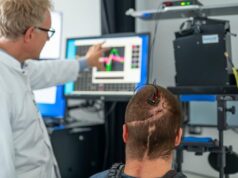 Hubly Surgical has received 510(k) clearance from the US Food and Drug Administration (FDA) to market its Hubly Drill, which the company describes as an innovative medical technology developed with the goal of making burr-hole procedures safer and more efficient in any setting—including outside of the operating room.
Hubly Surgical has received 510(k) clearance from the US Food and Drug Administration (FDA) to market its Hubly Drill, which the company describes as an innovative medical technology developed with the goal of making burr-hole procedures safer and more efficient in any setting—including outside of the operating room.
A burr-hole procedure is the prerequisite brain surgery for any time a physician needs to access the brain, and is performed in many patients with traumatic brain injury, hydrocephalus, ruptured aneurysm, stroke, subdural haematoma, epilepsy, Parkinson’s disease, and brain cancer/tumour, a Hubly press release details.
These procedures are frequently performed outside of the operating room in emergencies, yet the current bedside procedure relies on an “inaccurate device” that is “deficient in safety and efficiency features”, the release continues.
“Burr holes are one of the most common neurosurgical procedures we perform,” said Matthew Potts (Northwestern University, Evanston, USA). “And at the bedside, they are often done using a cumbersome hand-cranked drill. I know first-hand how antiquated this solution is and how dangerous this procedure can be. I am excited that Hubly has developed an improved intracranial drill for burr-hole placement.”
The Hubly Drill aims to mitigate the challenges of bedside cranial access by being the first and only cordless single-use cranial drill with advanced features for safety and efficiency in any setting, Hubly claims.
“Essentially, we are bringing the precision of the operating room, which physicians are accustomed to, to the bedside,” added Casey Grage, the company’s CEO and founder.
The technology features novel innovations for safety and efficiency, including SMART Auto-Stop with a proprietary drill bit designed to reduce over-plunge—a common problem with the current standard of care—and a first-of-its-kind LED Force Indicator that changes colour with force, increasing user control.
“We believe the facilities that add the Hubly Drill into their workflow will recognise significant value by reducing operating room dependence and increasing access at the bedside, thus lowering hospital costs,” Grage said.










